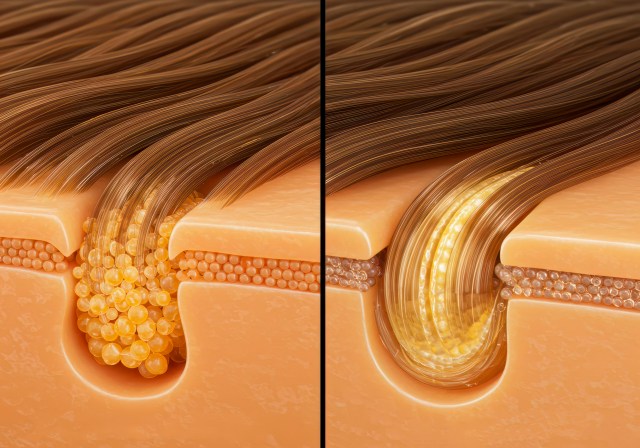How to Identify Your Hair Porosity and Choose the Right Products

SUMMARY Understanding hair porosity—how well your hair absorbs and retains moisture—is key to maintaining healthy hair. By testing whether your hair has low, medium, or high porosity, you can tailor your hair care routine with appropriate products and techniques, such as using lightweight moisturizers for low porosity or richer creams and protein treatments for high porosity. This personalized approach helps keep your hair nourished, hydrated, and strong over time.
Understanding your hair porosity is essential for maintaining healthy, vibrant hair. Hair porosity refers to how well your hair can absorb and retain moisture. By identifying your hair’s porosity level, you can select the most suitable hair care products and routines that cater specifically to your hair’s needs.
What Is Hair Porosity?
Hair porosity describes the condition of the hair cuticle, which is the outermost layer of each strand. It determines how easily moisture can enter and exit the hair shaft. There are three main types: low, medium (normal), and high porosity. Low porosity means tightly bound cuticles that resist moisture absorption; medium porosity indicates slightly raised cuticles allowing balanced moisture flow; high porosity means gaps or damage in the cuticle layer causing rapid moisture loss.
How to Test Your Hair Porosity at Home
A simple way to check your hair’s porosity is through a float test. Take a few strands of clean, product-free hair and place them in a bowl of water. If they float on top, you likely have low porosity; if they slowly sink, medium porosity; if they quickly sink to the bottom, high porosity is probable. Another method involves observing how long it takes for conditioner or water-based treatments to absorb into your strands during washing.
Why Understanding Porosity Matters for Hair Care
Knowing your hair’s porosity helps tailor your moisturizing routines effectively. Low-porosity hair might need lightweight products that won’t sit on top but still penetrate deeply with gentle heat application like warm towels or steam treatments. High-porosity hair benefits from rich creams and oils that seal in moisture and protect against environmental damage due to its tendency to lose hydration quickly.
Choosing Products Based on Your Hair Porosity
For low-porosity hair, opt for water-based moisturizers with humectants like glycerin or aloe vera paired with light oils such as argan oil that won’t weigh down strands. Medium-porosity users can follow balanced regimens using moderate creamy moisturizers combined with regular conditioning treatments. High-porous textures thrive when using heavier butters (shea butter) or sealing oils (castor oil) alongside protein-rich conditioners which help strengthen compromised cuticles.
Additional Tips for Maintaining Healthy Hair According To Porosity
Regardless of type, regular deep conditioning nourishes all kinds of porous levels but frequency may vary: every 1–2 weeks suits most individuals while highly porous strands benefit from weekly intensive treatments including protein masks followed by sealing agents after washing sessions.
By identifying whether you have low, medium, or high hair porosity you empower yourself with knowledge that ensures better product choices leading toward healthier locks over time. Experimenting gently while monitoring results will help perfect your personalized routine.
This text was generated using a large language model, and select text has been reviewed and moderated for purposes such as readability.











